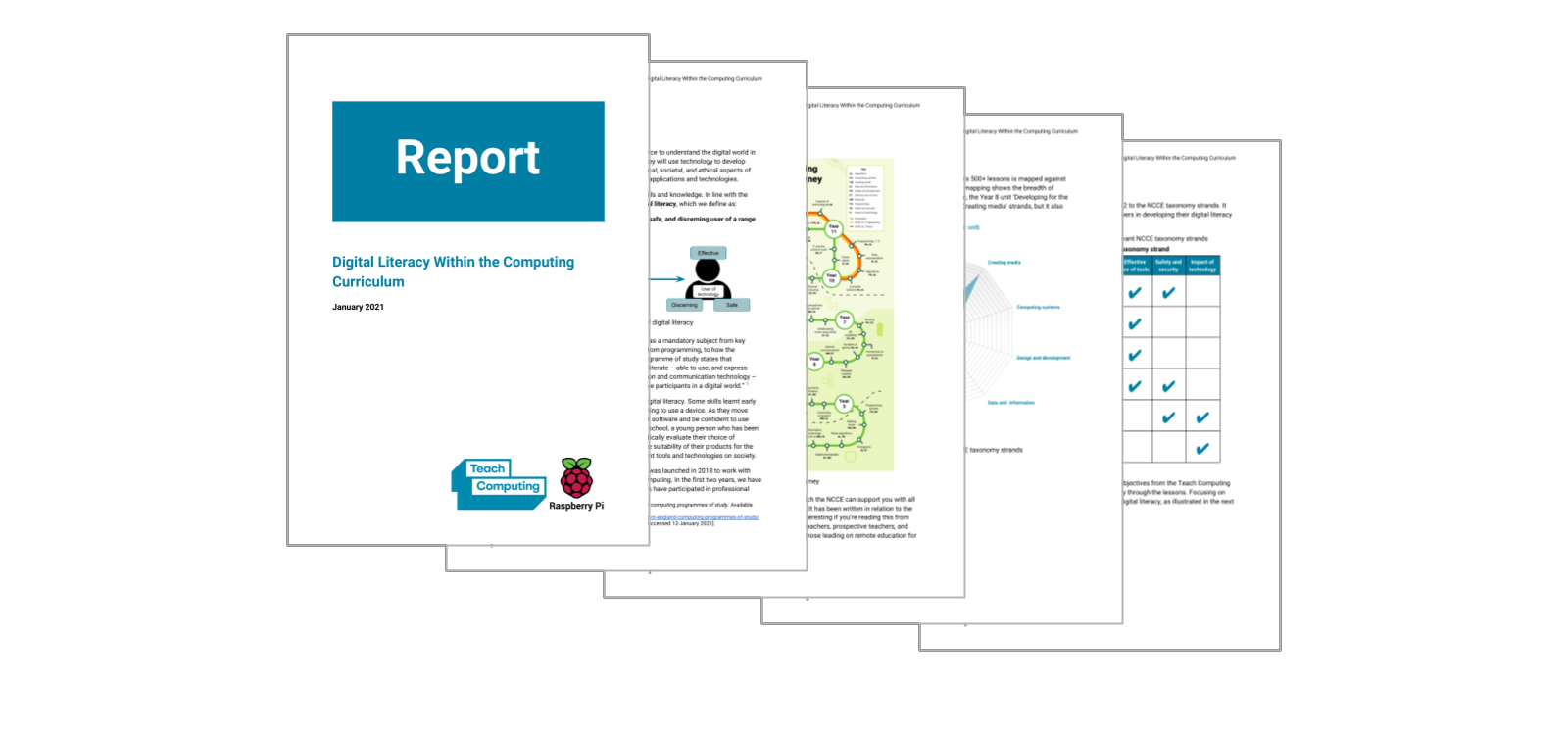Digital literacy within the computing curriculum
23 February 2021

Today the NCCE is sharing its first report focusing on teaching and learning within the computing curriculum, in particular exploring the role of “digital literacy”. Through this report, we seek to better define digital literacy, highlight its presence and importance in the computing curriculum, and outline a progression for digital literacy modelled by the Teach Computing Curriculum.
If nothing else, this year has emphasised the importance of learners being digitally literate, not only to support their progress and performance in computing, but to help them engage with their education across the curriculum. The sudden switch to remote learning has demonstrated the gaps in some learners’ digital literacy and challenged the idea that as “digital natives” they either already had or could easily develop these skills and knowledge.

Digital literacy: the skills and knowledge required to be an effective, safe, and discerning user of a range of computer systems.
Digital literacy is not a new aspect of the curriculum and neither is it a product of the 2012/2013 reform which saw the introduction of computing as a subject. The skills and knowledge that make up digital literacy have been integral to the programme of study since its previous incarnation as ICT. One impact of the curriculum reform that introduced more computer science has been the perception by some that digital literacy had been replaced. While this may be the case in how the curriculum has been interpreted and implemented in the past, this report shows that it was not the intent of the current curriculum in which digital literacy is not only present, but a priority.
In designing and producing the Teach Computing Curriculum, we took a holistic approach to the full programme of study for computing from key stage 1 to 4. All of our content is mapped to a ten-strand content taxonomy that covers the breadth of computing, across which we can identify elements of digital literacy. Using this taxonomy, we’ve been able to analyse the Teach Computing Curriculum materials, draw out the skills and knowledge that match our definition of digital literacy, and present these as a progression across key stages 1–4.
Although digital literacy is explicitly mentioned as part of the computing programme of study, its place shouldn’t be limited to the subject of computing. It is our view that supporting learners to develop their digital literacy is the responsibility of all subjects and the school community as a whole. Learners should be able to exercise and demonstrate their digital literacy in all areas of their education.
Providing learners with this experience is of course highly dependent on the skills and confidence of their teachers, who in many cases may need support in how to effectively teach digital literacy within their subjects or in developing their own digital literacy and confidence.
The NCCE offers support to all teachers to either develop their own digital literacy through its various CPD offerings or incorporate digital literacy into their teaching through its high-quality and free curriculum. On top of that is the more individualised support offered by our Computing Hubs, Subject Matter Experts, communities, and more.